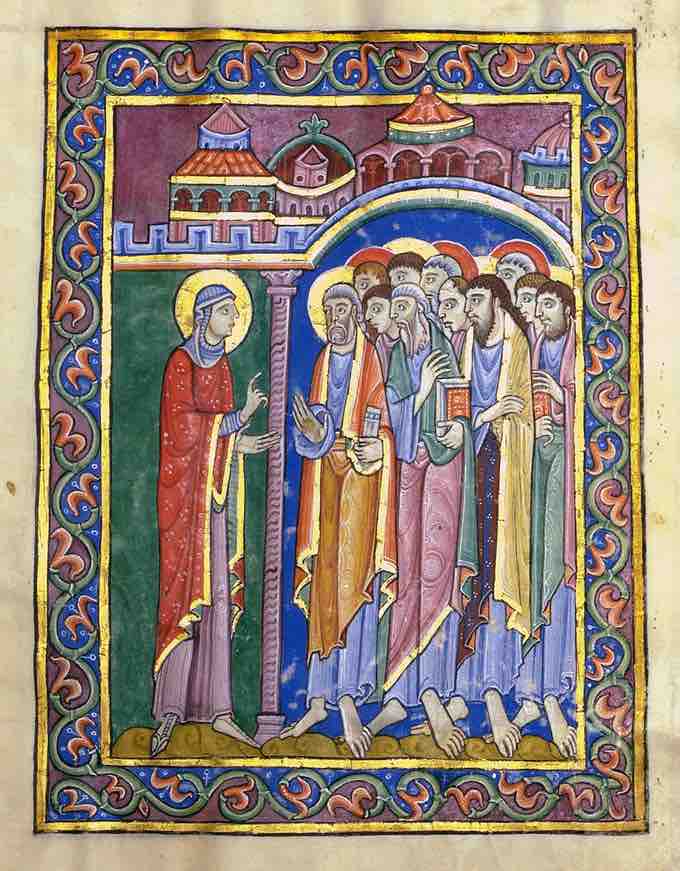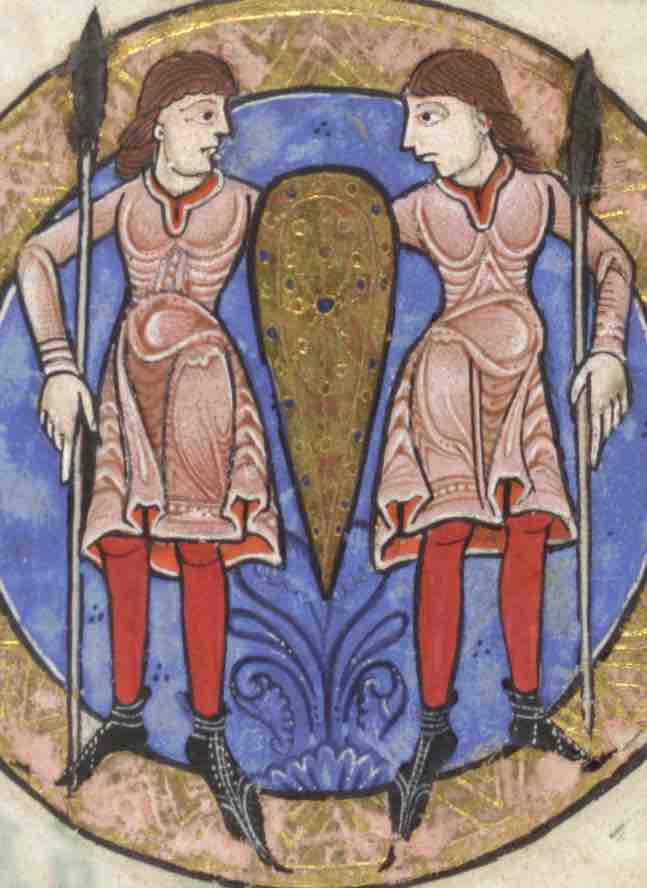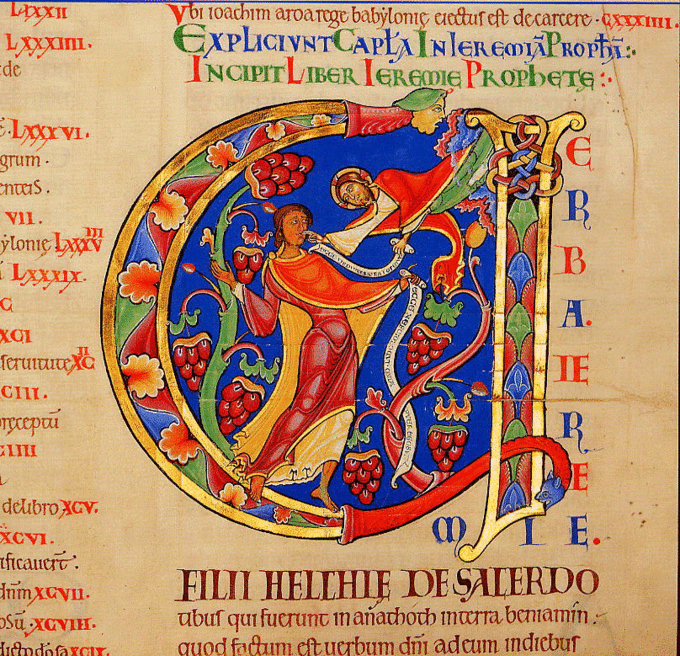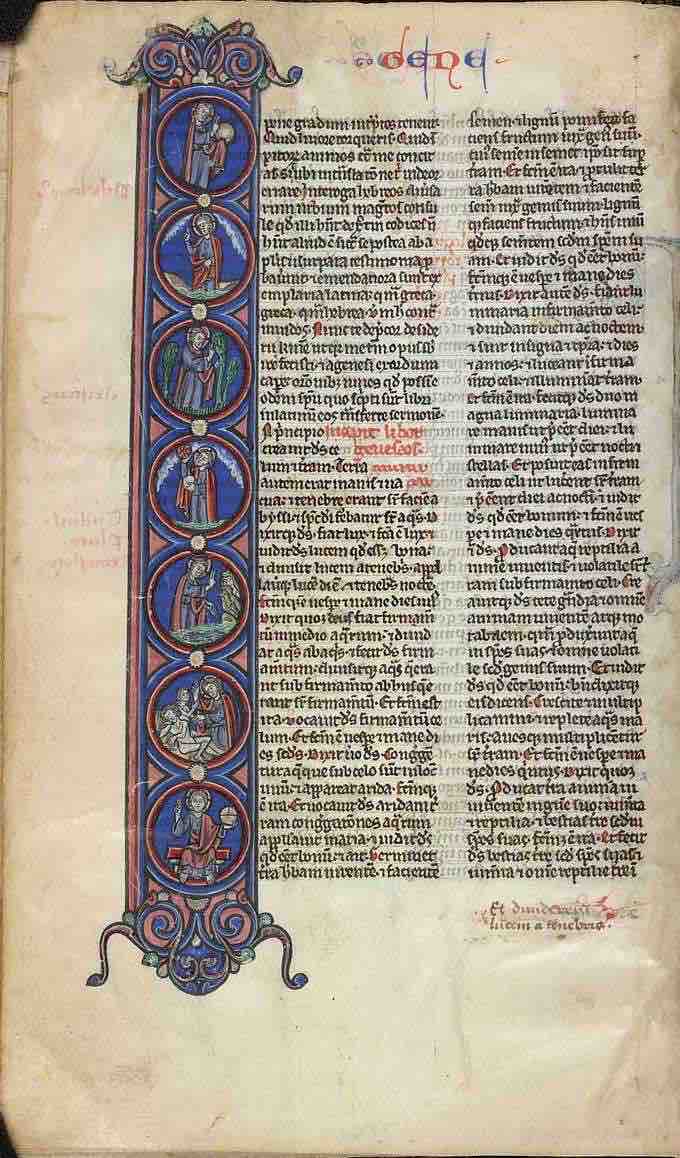Illuminated Manuscripts in the Romanesque Period
A number of regional schools of art converged during the early Romanesque period and influenced the production of illuminated manuscripts and illustrated books. The "Channel school" of England and Northern France was heavily influenced by late Anglo-Saxon art, whereas the style in southern France depended more on Iberian influence. In Germany and the Low Countries, Ottonian styles continued to develop; these styles, along with Byzantine schools, in turn influenced Italy. By the 12th century there had been reciprocal influences between all of these schools, although a degree of regional distinctiveness remained.
The typical focii of Romanesque illumination and illustrated books were the Bible, where each book could be prefaced by a large historiated initial, and the Psalter, where major initials were similarly illuminated. In both cases, more lavish examples might contain cycles of scenes in fully-illuminated pages, sometimes with several scenes per page. The Bibles in particular were often made with a very large page size and might be bound into more than one volume. Well-known examples of manuscripts from this era include the St. Alban's Psalter, Hunterian Psalter, Winchester Bible (the "Morgan Leaf"), Fécamp Bible, Stavelot Bible, and Parc Abbey Bible.
By the end of the period, commercial workshops of artists and scribes were becoming significant, and illumination (and books generally) became more widely available to both lay people and clergy.
Well-Known Works of Art
St. Alban's Psalter
St. Alban's Psalter, also known as the Albani Psalter or the Psalter of Christina of Markyate, is an English illuminated manuscript and one of several psalters known to have been created at or for St Alban's Abbey in the 12th century. It is widely considered to be one of the most important examples of English Romanesque book production; it is of almost unprecedented lavishness of decoration, with over 40 full-page miniatures, and contains a number of iconographic innovations that would endure throughout the Middle Ages.

St. Alban's Psalter
A scene depicting Mary Magdalene announcing news of the risen Christ. St. Alban's Psalter is widely considered to be one of the most important examples of English Romanesque book production.
Hunterian Psalter
Also known as the York Psalter, the Hunterian Psalter is an illuminated manuscript of the 12th century. It was produced in England around 1170, and is considered a striking example of the Romanesque style. The book opens with an illustrated calendar, and each month begins with the historiated letters "KL", an abbreviation for kalenda (i.e. the first day of the month). Then follow 13 pages of prefactory full-page miniatures, with two scenes to a page, which include three pages of Old Testament scenes; six pages of scenes from the Life of Christ (though further pages are perhaps missing); and, unusually for this date, three pages from the Life of the Virgin, including a Death of the Virgin with a funeral procession and an Assumption.

Hunterian Psalter
Depiction of the astrological sign, Gemini. The Hunterian Psalter was produced in England around 1170 and is considered a striking example of this Romanesque style.
These are the earliest English miniatures to have gold-leaf backgrounds incised with patterns of lines and dots. After these pages, there is an opening with full-page miniatures of David playing his harp and a "Beatus" initial for the start of Psalm 1 ("Beatus vir"). All the psalms have a large illuminated initial, often historiated, and each verse starts with an enlarged gold initial. The start of the 10 traditional divisions of the text have especially large initials, as is usually the case.
Winchester Bible
The Winchester Bible is a Romanesque illuminated manuscript produced in Winchester between 1160 and 1175. With folios measuring 583 x 396 mm (23 x 16 inches), it is the largest surviving 12th-century English Bible.

Winchester Bible
A scene depicting God addressing Jeremiah. During the Romanesque period, the focus of major illumination in the West moved from the Gospel Book to the Psalter and the Bible, and the Winchester manuscript is one of the most lavish.
During the Romanesque period, the focus of major illumination in the West moved from the Gospel Book to the Psalter and the Bible, and the Winchester manuscript is one of the most lavish. The artwork is incomplete; many illuminations were left unfinished, while others were deliberately removed. The illuminations throughout the manuscript appear in varying stages of completion, ranging from rough outlines and inked drawings to unpainted gilded images and figures complete in all but the final details. In all, 48 of the major historiated initials that begin each book stand complete.
Fécamp Bible
The Fécamp Bible is an illuminated Latin Bible produced in Paris during the third quarter of the 13th century. Each book of the Bible and the major sections of Psalms are introduced by a large historiated initial in colors and gold, with the exception of the books of Deuteronomy, Isaiah, and Haggai. In all, there are 79 extant large historiated initials. The beginnings of the prologues have large zoomorphic and foliate initials. The beginning of each chapter is marked by a small initial in red with blue-pen flourishes or in blue with red-pen flourishes.

Fécamp Bible
The Fécamp Bible is an illuminated Latin Bible produced in Paris during the late 13th century.